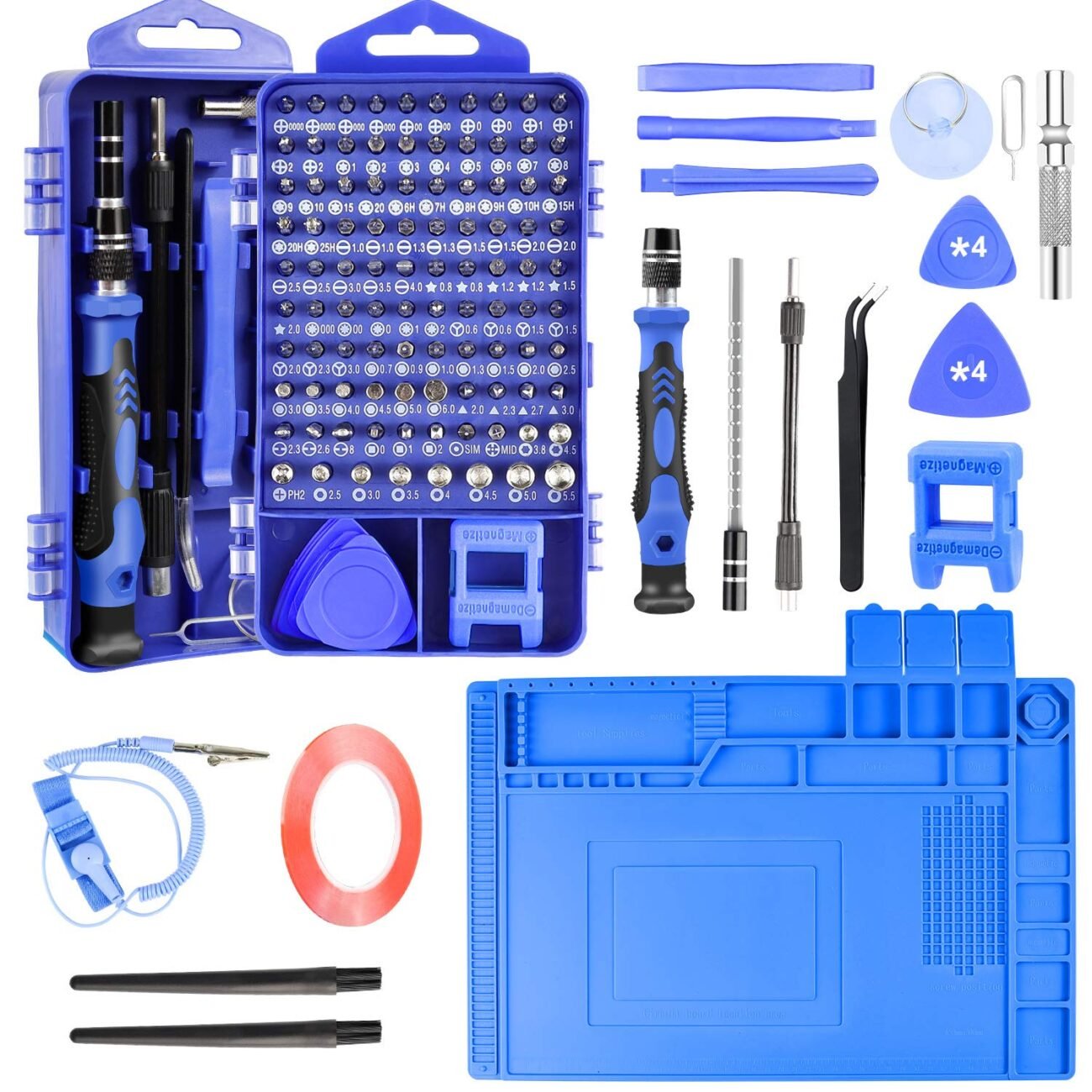Building a PC isn’t just about picking the right hardware—it’s also about having the right tools and software to make the process smooth, efficient, and safe. Whether you’re a first-time builder or a seasoned DIY enthusiast, certain tools and programs can make a huge difference in both the assembly and post-build phases.
In this guide, we’ll list the essential physical tools and software utilities every PC builder should have in 2025.
Essential Physical Tools
1. Phillips #2 Screwdriver
- The MVP of PC building.
- Get one with a magnetic tip to avoid dropping screws into tight spaces.
- Optional: get a precision set for small components like M.2 screws.
2. Anti-Static Wrist Strap
- Protects components from static electricity damage.
- Clip it to your case and wear it on your wrist during the build.
3. Compressed Air Can or Electric Duster
- Keeps your build dust-free during assembly.
- Essential for cleaning fans, heatsinks, and filters later on.
4. Cable Ties or Velcro Straps
- Keeps cable management clean and airflow optimized.
- Velcro is reusable, zip ties are permanent.
5. Thermal Paste (Optional)
- Most CPU coolers include it, but aftermarket thermal paste is better quality.
- Top choices: Thermal Grizzly Kryonaut, Arctic MX-6, Noctua NT-H2.
6. Flashlight or Headlamp
- Helps when working in poorly lit areas or inside dark cases.
7. Small Parts Tray or Magnetic Mat
- Prevents screws from getting lost during assembly.
- You can also use labeled compartments for easier tracking.
Must-Have Software Tools (Before & After Building)
1. PCPartPicker (pcpartpicker.com)
- Build your parts list and check compatibility.
- View estimated wattage and pricing from multiple vendors.
2. Windows Media Creation Tool
- Creates a bootable USB drive for Windows installation.
- Available directly from Microsoft’s website.
3. HWiNFO / HWMonitor
- Monitors system temperatures, fan speeds, and voltages.
- Useful during stress testing and daily monitoring.
4. MSI Afterburner
- Controls GPU fan curves, core clocks, and monitors FPS/temp overlays.
- Works with most NVIDIA and AMD graphics cards.
5. CPU-Z / GPU-Z
- Detailed info on CPU, motherboard, and GPU specs.
- Great for confirming if components are performing as expected.
6. CrystalDiskMark
- Tests read/write speeds of SSDs and HDDs.
- Essential for checking if your storage is operating at full speed.
7. Prime95 / Cinebench
- Use to stress test your CPU or measure performance.
- Helpful after build completion to confirm system stability.
8. 3DMark (Time Spy, Fire Strike)
- Popular for benchmarking GPU and overall system performance.
- Good comparison tool to see if your system is performing as it should.
9. FanControl (by Rem0o)
- Advanced fan profile management for all case and CPU fans.
- Quieter system without sacrificing cooling.
10. Display Driver Uninstaller (DDU)
- Safely removes old GPU drivers before installing a new card or clean reinstall.
- Prevents conflicts and system crashes.
Optional but Useful Extras
- Speccy – Overall system info at a glance
- Macrium Reflect – For cloning drives during storage upgrades
- OBS Studio – For game recording/streaming tests
- CCleaner – For temporary file cleanup (use with care)
Final Tips for Builders
- Keep a USB drive ready with all your software tools post-build.
- Install critical drivers manually from manufacturer websites (GPU, chipset, LAN).
- Use thermal monitoring software during the first few gaming sessions.
- Save benchmark results for future upgrades or troubleshooting.
Wrapping Up: Equip Yourself for Success
Having the right tools and software is just as important as choosing great hardware. With a well-stocked toolkit and the right digital utilities, you’ll build more confidently, diagnose issues faster, and get better long-term performance from your system.
Next up: “How to Maintain Your PC for Long-Term Performance and Health”
Essential Tools & Software for PC Building
Physical Tools
- Magnetic Phillips #2 screwdriver (and a #1 for M.2 screws) – The screwdriver is your most-used tool; make it magnetic and include a small size for precise tasks. amazon.com+5pcworld.com+5reddit.com+5
- Anti-static wrist strap or mat – Prevent damage from static — vital on carpeted floors. gamespot.com+2reddit.com+2amazon.com+2
- Zip ties, Velcro straps & side cutters – Keep cables neat and out of airflow pathways. amazon.com+2reddit.com+2gamespot.com+2
- Magnetic screw tray or mat – Essential for keeping track of small screws. amazon.com+4gamespot.com+4amazon.com+4
- Flashlight or headlamp – Illuminates dark areas inside the case for easy component installation. gamespot.com+2reddit.com+2pcworld.com+2
- Thermal paste – Stock paste is okay, but premium brands like Arctic MX‑6 or Noctua NT‑H2 offer better cooling.
Essential Software Utilities
| Tool | Purpose |
|---|---|
| PCPartPicker | Compatibility checks and build planning |
| Windows Media Creation Tool | Create bootable USB installers |
| HWiNFO / HWMonitor | Real-time temperature and voltage monitoring |
| MSI Afterburner | Control GPU fan curves, monitor performance |
| CPU‑Z / GPU‑Z | Inspect and verify component specs |
| CrystalDiskMark | Measure SSD/HDD performance |
| Prime95 / Cinebench | Stress test CPU and benchmark performance |
| 3DMark (Time Spy, Fire Strike) | Graphics and system benchmarking |
| FanControl (Rem0o) | Fine-tune fan profiles quietly and efficiently |
| Display Driver Uninstaller (DDU) | Clean removal of old graphics drivers |
Reddit Feedback
“Look for a Philips screwdriver with a magnetic tip…ideal for hard-to-reach places.”
“Zip ties or twist ties work well, and anti-static wrist strap only needed in carpeted areas.”
gamespot.com+2reddit.com+2pcworld.com+2amazon.compcworld.com
Why These Tools Matter
- Physical tools ensure smooth, safe assembly and maintenance—no damaged screws or static mishaps.
- Software protects your investment by validating performance, managing heat, and ensuring driver integrity.
What Comes Next in the Series
Up next: “How to Maintain Your PC for Long-Term Performance and Health”—ready when you are!
